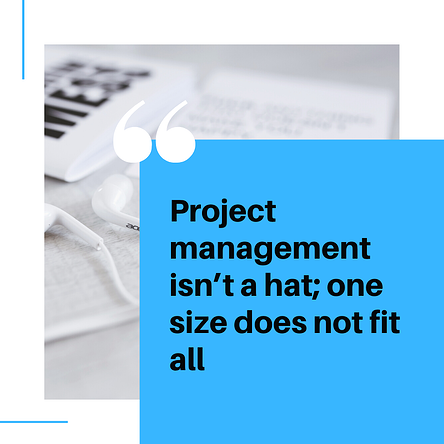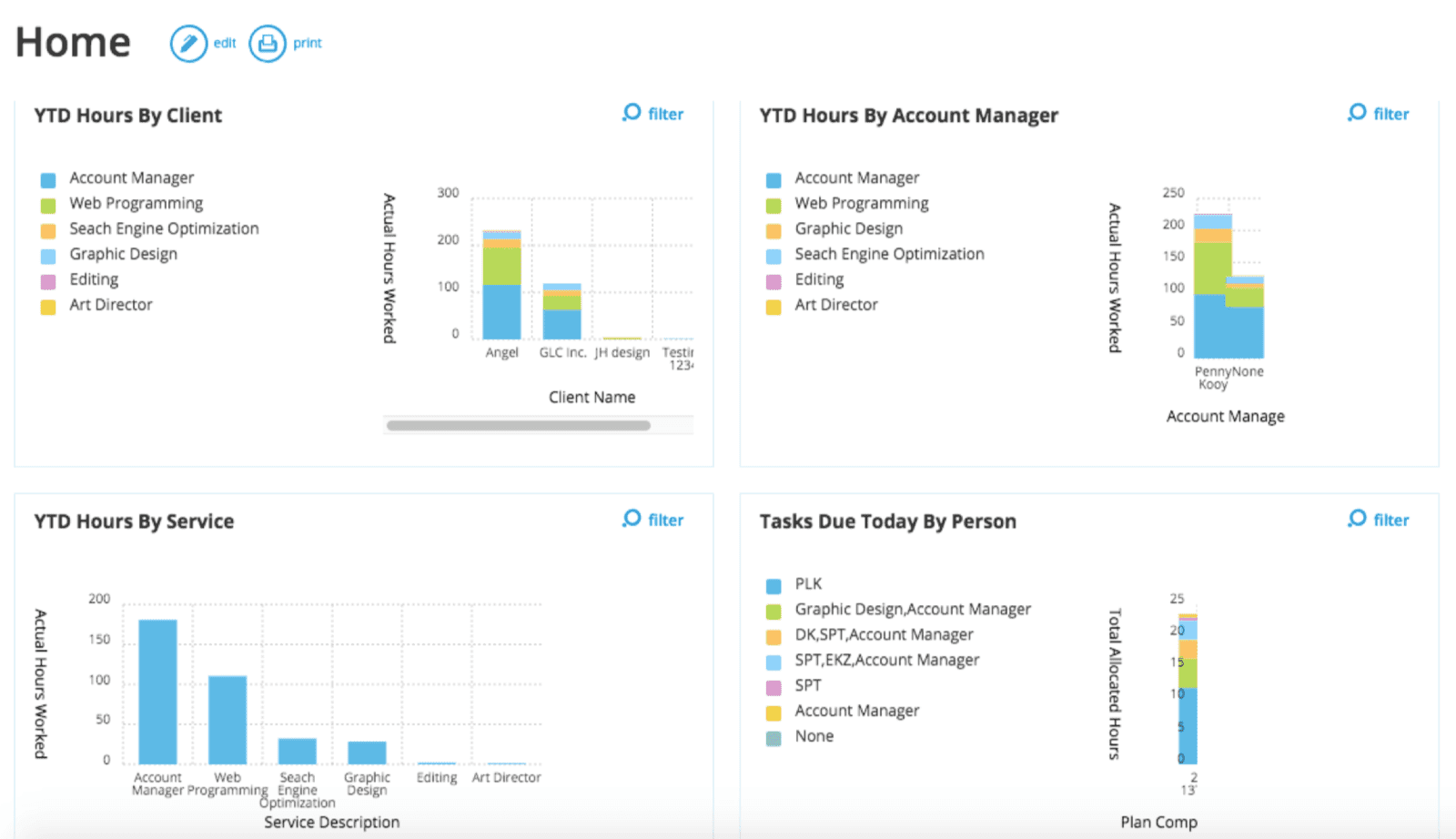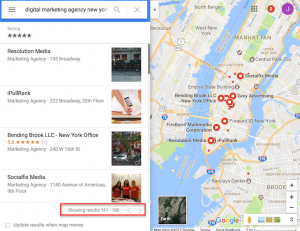What are some of the top project management trends agencies need to watch out for? Find the right answers in this article.
As a project manager, you have your work cut out for you.
It’s not enough to master the nuances of managing projects in the creative field – a tough ask in itself – you also have to stay abreast of the latest developments in project management.
While core project management principles have remained largely the same, the tools you use to implement them have changed drastically. SaaS, mobile-friendliness, data integration – all buzzwords a decade ago are industry mainstays now.
As we step into a new decade, it’s a good time to ask: what are some project management trends you need to keep an eye on? How should you set up your agency’s PM efforts for success in the coming years?
I’ll do a deep dive into the trends that will define project management in 2020 and beyond. We’ll look at some key trends to adopt, as well as some over-hyped trends to avoid.
Agency Project Management Needs Are Different
The project management field has been historically linked to industries with clear, scalable physical deliverables.
Think construction or factory production. Get the process to manufacture one widget right and you can usually scale it to produce 10,000 widgets.
Agency project management, it goes without saying, is different.
While I won’t even get into the absurdity of treating creative work as a factory production line, there are some very real challenges a creative project manager has to contend with:
- Scaling issues: Agency work does not scale easily. You can’t indefinitely add resources and expect production to scale proportionately. Distributing work across your team, thus, becomes a challenge.
- Lack of fungibility: Agency work is also not fungible. You can’t swap out one creative with another and expect the same results. You have to plan months ahead to make sure that the right creative works on the right job.
- Non-localized usage: While remote work has impacted every industry, it has left a far bigger mark in the creative industry (when compared to say, manufacturing). You, as well as the people you manage, will want access to their tools outside of the office.
- Knowledge fragmentation: Agency work is essentially knowledge work. And knowledge – subjective (project learnings) as well as objective (data) – have a habit of fragmenting over time. As a project manager, you have to turn fragmented knowledge into actionable insight.
Responding to these challenges means adopting emerging agency-focused project management trends.
I’ll look at a few such trends below.
Adopt These 5 Project Management Trends
Stepping into a new decade, here are some PM trends that will help you excel in the coming years:
1. Switch to specialized project management tools
Google “project management tools” and you’ll find literally hundreds of options to choose from.
But are all these options equally good for an agency?
Largely, no. Agencies are different beasts than software or manufacturing companies. The tools to manage them should be different as well.
As one project manager once told me, “project management isn’t a hat; one size does not fit all”.

If you’re using general-purpose PM software, it’s a good time to ask yourself: why? Vertical-focused PM tools offer so much more utility for your specific use case. Sticking to non-specialized software is just limiting your potential.
Evaluate your current PM tools. Ask: does it fit your specific needs? Or do you have to wrangle it around to fulfill your requirements?
General-purpose PM software might suffice for a small business. But as your agency scales, you’ll find that the lack of agency-focused features is an impediment to growth.
This begs the question – what should an agency-focused project management tool look like?
For starters, it should:
- Be collaboration-first: Creative work is collaborative work. Keeping PM and collaboration separate is an easy way to lower productivity and increase creative frustration.
- Focus on resource management: Managing agency projects means managing resources – both full-time and freelancers. Poor or absent resource management capabilities will leave you juggling spreadsheets instead of delegating tasks.
- Have strong task management capabilities: Assigning the right task to the right resource at the right time is essential for creative project management. Look for tools with strong task management features baked in.
2. Rely on data, not intuition
Every experienced project manager develops an intuitive understanding of project and resource requirements over time.
But within the agency setting, intuition isn’t enough.
Three reasons why:
- High attrition rate: Creative agencies have some of the highest attrition rates of all industries. The constant churn means that PMs can seldom truly intuitively understand the work patterns of their resources.
- Nature of creative work: Creative work is naturally arrhythmic. A spark of inspiration can help you get more done in 10 minutes than in 10 hours. Scheduling such work requires a data-backed understanding of the patterns and approaches of all your resources.
- Data-backed reporting: More and more clients are asking their agency partners for more tangible results. Without data, your reporting can only be qualitative, not quantitative.
A data-focused approach to project management solves so many of the problems you usually encounter in agencies.
Take task assignment as an example. If you have historical project data, you can estimate which resources are late on which tasks. This can help you avoid assigning urgent tasks to resources who are habitually late on certain tasks.
More importantly, a focus on data helps you create the kind of reports clients want in 2020 – data-rich, metrics-focused.
Try switching to a project management approach that prioritizes data collection and analysis. The more data you can collect, the better insight you’ll have in the way you work.
3. Break down silos
In 2020, I don’t need to remind you that silos are bad for business. As one author writing in Harvard Business Review puts it:
“Silos create an environment where sharing and collaborating for anything other than one silo’s special interests is virtually impossible.”
Silos are particularly bad for creative agencies since they lead to the atomization of knowledge. What one team or department learns isn’t shared by others. Organizational knowledge – that vital tool for creative innovation – remains locked away.
The key to breaking down silos is to prevent their build-up in the first place. Adopting management tools and practices that force your organization to share and integrate is a powerful deterrent to siloization.
For instance, if your accounting and project management tools are housed on the same platform, sharing data becomes as simple as changing user permissions.
Similarly, if different departments share the same tools, you can easily build a project dashboard to get access to cross-department data in real-time.

Workamajig’s project dashboard collects data from different departments to give you a bird’s eye view of your agency’s performance
Let this be the key project management trend that guides you in the new decade: more integration, fewer silos.
4. Adopt robust documentation practices
In life as in creative projects, change is inevitable.
But when you don’t document change requests, you flirt with scope creep. You can’t track changes, nor can you refer to the original brief to correct clients. Change requests balloon and before you know it, your project has gone astray.

Most projects experience some form of scope creep, as PMI data shows
How do you deal with this problem?
By adopting robust documentation practices.
Everything that you create or collaborate on should be stored in a centrally accessible repository. This includes everything from project kickoff meeting notes and change requests to communication plans and Gantt charts.
This obsessive documentation serves several purposes:
- It safeguards you against unnecessary risks and requests from partners and clients
- It helps you create a repository of knowledge – you can turn to stored documents to learn from successful projects
- It helps you create and optimize your templates
- It makes sharing documents across teams easier
Try using PM tools that automatically create centralized repositories of all your documents. This document library should ideally be accessible to anyone (with the required permissions, of course) from any platform.
5. Double-down on resource management
Few industries are as dependent on resources as the creative industry. The quality of your creatives will have a marked impact on the quality of your work.
Underinvesting in resource management in this context is a recipe for disaster.
Look around your agency. Do you know, at a glance, what each resource is doing? Do you know what sort of talent lurks in different teams and departments across the agency? Do you have their schedules mapped out for the next week, month, or even quarter?
If you’re using old school project management techniques, the answer will likely be no.
Managing a modern agency requires a laser-sharp understanding of your resources, their schedules, and their skills. You need to be a leader, HR, and project manager all rolled into one. Pair up a resource with the right project for their skills and you’ll see magic. Fail and you’ll see a demoralized workforce and derailed projects.
Accomplishing this resource-juggling feat requires that you:
- Have access to resource level data such as current assignments, future availability, past work records, etc.
- Recognize skills available to you across the organization, including teams not directly managed by you
- Have real-time updates on availability, vacations, and performance
As a project manager, you have the unenviable task of keeping your resources happy without affecting productivity. The more robust your suite of resource management tools, the better you’ll be at this task.
This covers the crucial project management trends you need to adopt to stay relevant in 2020.
But what about the trends you need to skip?
I’ll look at a few of these below.
Avoid These Project Management Trends
With the plethora of project management approaches, platforms, and tactics at your disposal today, it is easy to be swayed by fads and trends that sound good on paper.
In particular, there are a few trends you need to look out for:
1. Desktop-only tools
In 2020, sticking to desktop-only project management tools is about as relevant as VCRs and Blockbuster rentals. You as well as the people you work with will work from their homes, airports, hotels, and coffee shops.
Limiting them to a desktop-only environment is an easy way to kill their productivity. Not to mention that it won’t be a good look when you try to hire creatives – smart people don’t want to work with outdated tools.
2. Hierarchical management
Rigid hierarchies and creativity don’t really mix. Even without the archetype of the “rebellious creative”, strict hierarchies don’t lend themselves well to innovation and collaboration.
As HBR famous declared, hierarchy is overrated.
While you shouldn’t go so far as to adopt a flat organizational structure (which has its own flaws), it makes sense to adopt a flexible approach to hierarchies.
Don’t force team members into strict “junior” or “senior” roles. Rather, adopt a fluid approach where a “junior” team member’s contributions are deemed as important as a veteran’s. Good ideas can come from everywhere. Strict hierarchies discourage those at the bottom from speaking up.
Pair veterans with novices, and set up your teams for both the project’s benefit as well as the long term health of the company. If your novice team members can learn more every project, they quickly will become part of the knowledgeable group, and you can diversify your team structure even further.
Over to You
The project management field is changing rapidly. New technologies are disrupting old patterns and changing the way we work. I haven’t even covered promising developments such as AI-powered project management and complex automation.
As a project manager, it is crucial that you keep one eye glued to this horizon of change. Spot trends early and get the first-mover advantage when you adopt them.
Business & Finance Articles on Business 2 Community
(66)









